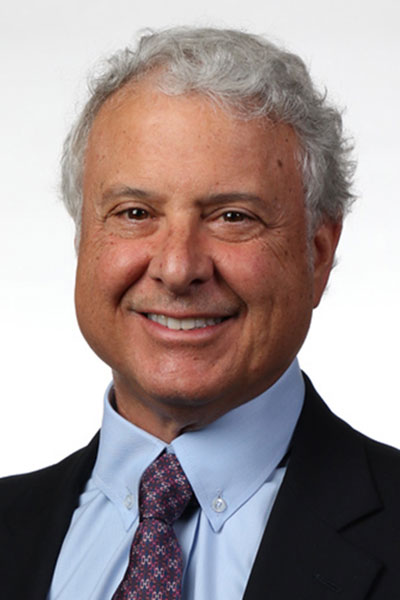Treatment with tirzepatide, a novel glucagon-like peptide-1 (GLP-1) and glucose-dependent insulinotropic peptide (GIP) dual receptor agonist, has been shown to improve sleep apnea severity and related cardiometabolic issues in people with moderate-to-severe obstructive sleep apnea (OSA) and obesity, according to findings from the SURMOUNT-OSA trial, which were presented during a late-breaking symposium on Friday, June 21, at the 84th Scientific Sessions.

“Tirzepatide demonstrated superior and clinically meaningful improvement of sleep-disordered breathing, superior improvement of sleep-related functioning and quality of sleep, and superior improvement of cardiovascular (CV) risk factors compared to placebo,” said Atul Malhotra, MD, University of California, San Diego School of Medicine, who presented the main efficacy and safety findings from the study.
The findings from SURMOUNT-OSA represent a “breakthrough in the history of treatment of obesity and sleep apnea,” according to Louis J. Aronne, MD, FACP, DABOM, Weill Cornell Medicine, who discussed the study’s implications regarding treatment of patients with obesity-related OSA.
“About 60 –70 percent of patients with OSA have obesity, and both contribute to their cardiometabolic risk,” Dr. Aronne said. “The SURMOUNT-OSA trial demonstrates that treatment of obesity with tirzepatide is an effective treatment for OSA, and it’s possible that combination therapy with tirzepatide plus continuous positive airway pressure (CPAP) is really the optimal treatment for OSA and obesity-related cardiometabolic risk.”
Based on the findings from the SURMOUNT-OSA trial, he believes tirzepatide could become the first medication approved for treatment of sleep apnea in patients with obesity.

SURMOUNT-OSA involved two randomized, double-blind, placebo-controlled trials that included 469 individuals with moderate-to-severe OSA and obesity. Study 1 enrolled patients unable or unwilling to use CPAP therapy, and Study 2 enrolled patients on CPAP therapy at baseline. Participants were assigned to receive either tirzepatide or placebo for 52 weeks.
The primary endpoint was the change in the apnea-hypopnea index (AHI), which measures the severity of sleep apnea. Key secondary endpoints included change of sleep apnea-specific hypoxic burden (SASHB); CV risk factors including changes in body weight, systolic blood pressure, and inflammation (hsCRP); and changes in patient-reported sleep-related impairment and sleep disturbance.
Dr. Malhotra reported that participants who took tirzepatide experienced a significant decrease in AHI compared to those who took the placebo, indicating an improvement in sleep-disordered breathing. Notable changes of CV risk factors included reductions in body weight (18 percent in Study 1 and 20 percent in Study 2) and improvements in systolic blood pressure (-9.6 in Study 1 and -7.6 in Study 2).
The number of participants who stopped being indicated for CPAP treatment was also improved with tirzepatide compared to placebo, and the Patient-Reported Outcomes Measurement Information System (PROMIS) scores for sleep-related impairment and sleep disturbance were improved, he added.
Regarding safety, he reported the most frequent adverse events were gastrointestinal-related and were generally mild to moderate, noting that gastrointestinal events were more frequent earlier in the study and tended to attenuate over time.
“The safety and tolerability profile of tirzepatide in people with moderate-to-severe OSA and obesity was generally consistent with the safety profile of tirzepatide and incretin-based therapies in people with obesity,” Dr. Malhotra said.
Other speakers during the symposium included Esra Tasali, MD, University of Chicago, who reviewed the cardiometabolic consequences of OSA; Vaishnavi Kundel, MD, MS, Mount Sinai, who provided an overview of the current therapeutic landscape for treating sleep apnea and the potential role of incretins; and Richard J. Schwab, MD, University of Pennsylvania Perelman School of Medicine, who described the rationale, hypotheses, and study design of SURMOUNT-OSA.
The symposium, SURMOUNT-OSA Trial Results and Potential Role of Tirzepatide in Treating Obesity-Related Obstructive Sleep Apnea, can be viewed on-demand by registered meeting participants on the virtual meeting platform. If you haven’t registered for the 84th Scientific Sessions, register today to access the valuable meeting content through Aug. 26.
Get On-Demand Access to the Scientific Sessions
There is still time to register for on-demand access to learn about the latest advances in diabetes research, prevention, and care presented at the 84th Scientific Sessions. Select session recordings will be available through Aug. 26.